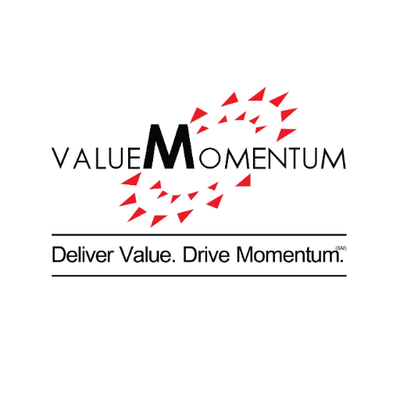Data is the primary currency of the digital age, and getting everything you can out of your ever-growing volume of data is imperative to staying competitive. This is reflected in the growing adoption of data democratization across industries—a practice that makes enterprise and 3rd-party data available throughout the business, rather than siloed in individual departments or IT.
In this blog, we will explore how insurers can set themselves up for success as they embark on the path to data democratization. By recognizing and planning for the primary technological and logistical challenges, insurers can overcome the obstacles of data democratization.
Roadblocks on the path to data democratization
Data democratization is a journey without a clear roadmap, but for many insurers, the rewards are worth the struggle. For example, liberating information from legacy systems enables faster development and delivery of new products, as well as speedier rollout of existing products into new states. By making data widely available, the entire enterprise gains a more complete picture of customers and agents, allowing for better risk management/prevention and more tailored products and services which can improve customer satisfaction. Looking further into the future, establishing effective self-service for company data paves the way for deploying actionable insights at every level and the push toward more advanced BI, such as predictive analytics.
In order to harness the potential opened up by data democratization, insurers must overcome a number of difficulties, some of which are inherent to any major initiative, and others which are unique to this endeavor. Briefly, here are the chief obstacles of data democratization:
- Enterprise data: Proprietary data is often stored in disparate legacy systems, in any number of different formats and with its own hierarchy of privileged access. Identifying and pulling together every vault of proprietary data is already complicated technologically, but the process is made more difficult by the need to ask and answer questions about the intended business functionality of the service, to inform the organization of the data.
- 3rd-party data: Data from outside sources—actuaries, IoT, social media, etc.—multiplies the complexity of trying to incorporate vastly different kinds of information into a single repository, and brings with it the legal hurdles associated with IP ownership and sharing.
- Cost: Though the cost of cloud data storage is continuing to drop, price will always be a key factor in any organization’s approach to data democratization.
- Time: Data democratization is a multi-stage process without a one-size-fits-all solution, so it can take a long time for the initiative to be completed–much less start generating value for the business.
The four stages of data democratization
How any business tackles these challenges—and what the challenges specifically look like—will depend on the structure and distribution of your data ecosystem. Nevertheless, there are four general steps every insurer must follow on the path to data democratization: research, centralization, planning and development, and cultural adaptation.
Step 1: Research
In this preliminary stage, insurers take stock of their current data infrastructure. Every source of data has to be recorded, and the patterns of data consumption identified. Understanding how and where your data is being used is an essential pre-requisite to designing a new system that will store and deliver that information.
This stage also provides the opportunity to anticipate problems with integrating incompatible data formats or other technical hiccups that could slow down the rest of the project.
Step 2: Centralization
Building a central repository to contain all data is one of the greatest engineering challenges for any organization, but it also lays the foundation for democratizing access to that data. Feasible jury-rigged solutions can make some of the data currently tied up in legacy systems available to more users, which may help teams transition to working with data while the repository is under construction.
However, efficient and adaptable data democratization will require a singular data platform. Insurers embarking on their data democratization journeys should consider providers like Microsoft Azure and Amazon AWS for their cloud-native data warehouses, which are being increasingly leveraged to host central repositories.
Step 3: Planning and Development
In this stage, insurers should focus on the end user experience. Getting data into usable shape will require insurers to decide how they want data-driven results to be conveyed, who now has access to what data, and which kinds of automated data-processing suit the organization’s needs. This requires executive management, IT, and the data team to collaborate and draft a plan for analytics, access, and alerts that developers can then implement for building the models, reports, dashboards, etc. Ensuring these models and dashboards employ the correct formats and are generated at the right time to inform decision-making is an important part of this step.
Step 4: Cultural Adaptation
Universal access to data isn’t useful if people don’t know how to use it. Early on, insurers should identify data experts across the organization who can guide development as well as educate team members. Putting data at the center of operations requires a focus on training and the talent pipeline, along with active efforts to engage and maintain the support of both executives and team-members. Starting with the highest-ROI use cases is a good way to generate excitement and interest, while also proceeding diligently and proving the value of the endeavor.
A data strategy for the future
Following these four steps will help any organization on their path to data democratization. Once completed, it will enable users to instantly retrieve the information they need themselves, rather than wait upon another user to grant access to or prepare data. In that way, employees at every level across the enterprise will be empowered to quickly manipulate and engage critically with data in order to generate new insights and drive better decision-making in their function. Moreover, insurers can reduce the burden of managing the data itself, enabling faster and more adaptable data governance practices that can keep pace with the rapidly changing world.
Want to learn more about enterprise data democratization in insurance? Check our on-demand webinar on data democratization to get insights from executives at Erie Insurance, Novarica, and IDMA.


